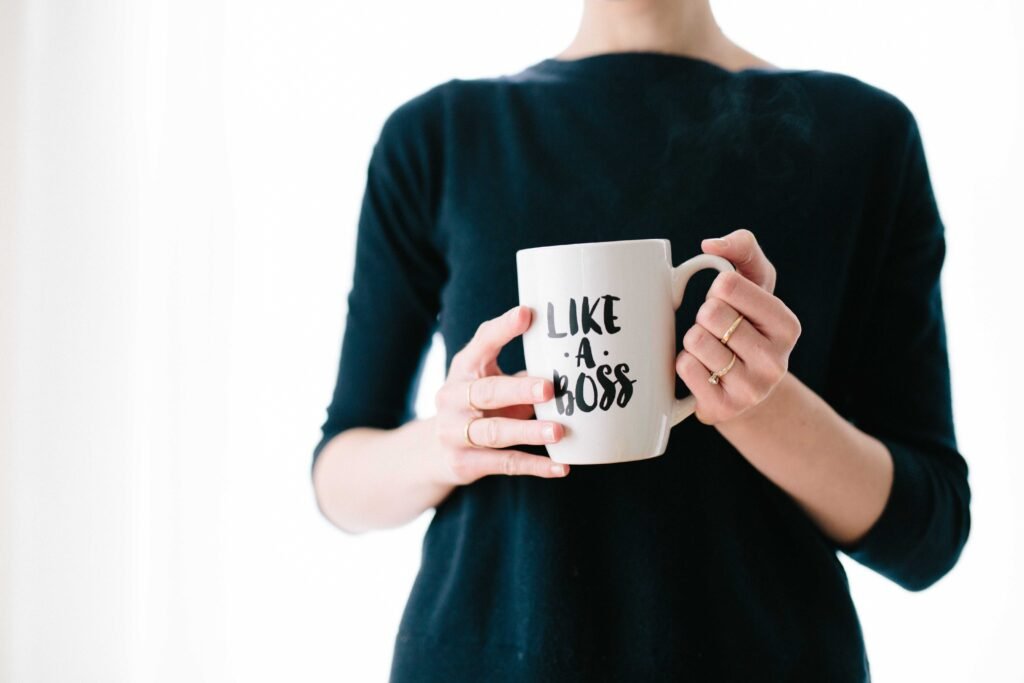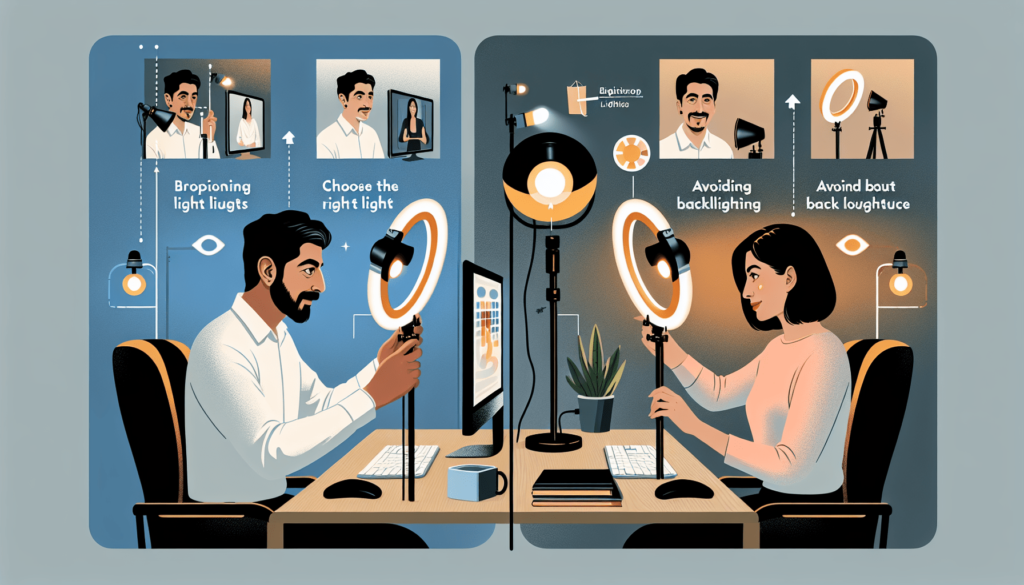Are you tired of looking dull and unprofessional during your video conference calls? Look no further! In this article, you will discover the secrets to mastering Zoom lighting and achieving a professional and polished look. With just a few simple tips, you can transform your video call environment into a well-lit and visually appealing space that will make a lasting impression on your colleagues and clients. Say goodbye to dimly lit backgrounds and hello to the perfect lighting setup that will enhance your presence and elevate your video calls to a whole new level. Get ready to shine like a pro on Zoom!

Lighting Basics
Understanding the importance of lighting in video calls
When it comes to video calls, lighting plays a crucial role in how you are perceived by others. Good lighting can enhance your appearance, make you look more professional, and help create a pleasant atmosphere during your Zoom calls. On the other hand, poor lighting can lead to shadows, dark areas, and an overall unflattering look. By understanding the importance of lighting and making a few adjustments, you can greatly improve the quality of your video calls.
Identifying different types of lighting sources
There are two main types of lighting sources to consider for your video calls: natural lighting and artificial lighting.
Natural lighting refers to the light that comes from the sun or other natural sources, such as windows. It is generally considered the most flattering and aesthetically pleasing lighting for video calls.
Artificial lighting, on the other hand, refers to any lighting that is not natural. This can include desk lamps, floor lamps, ring lights, and other types of lighting equipment. Artificial lighting can be a great option when natural lighting is scarce or insufficient.
Choosing the right lighting setup for Zoom calls
The right lighting setup for your Zoom calls will depend on various factors, such as the location of your calls, the time of day, and the overall ambiance you want to create. It’s important to consider the specific needs of your setup, as well as your personal preferences.
In the following sections, we will explore different lighting options and techniques that can help you create a professional and flattering look for your video calls.
Natural Lighting
Utilizing natural light to your advantage
Natural light is considered the gold standard for lighting in video calls. It provides a soft and even illumination that is generally more flattering than artificial lighting. To make the most of natural light, position yourself facing a window or another source of natural light. This will help evenly light your face and minimize shadows.
Positioning yourself in relation to the light source
When utilizing natural light, it’s important to consider your positioning in relation to the light source. Avoid sitting with your back to the window, as this can create a silhouette effect and make you appear dark. Instead, face the window or light source to ensure that your face is well-lit.
Optimizing the time of day for the best natural lighting
The time of day can also have a significant impact on the quality of natural lighting. Ideally, you want to schedule your video calls during the times when natural light is at its best. This is typically early morning or late afternoon when the sun is lower in the sky and produces a softer, more diffused light. Avoid scheduling calls when the sun is directly overhead, as this can create harsh shadows and unflattering lighting conditions.
Artificial Lighting
Exploring different types of artificial lighting options
While natural lighting is preferred, there may be times when it is not available or sufficient for your video calls. In such cases, artificial lighting can be a great alternative. There are several types of artificial lighting options to consider, including desk lamps, floor lamps, and ring lights.
Selecting the appropriate lighting equipment
When selecting artificial lighting equipment, consider factors such as brightness, adjustability, and ease of use. Look for lights that offer adjustable brightness settings so that you can customize the lighting to your specific needs. It’s also helpful to choose lights that are easy to position and can be adjusted to different angles.
Setting up and positioning your artificial lights
When setting up your artificial lights, aim to position them at a 45-degree angle to your face. This will help create depth and minimize shadows. Experiment with different positions and angles to find the most flattering lighting setup for your specific needs. Consider using multiple light sources to create an even and balanced illumination.
Ring Lights
Understanding the features and benefits of ring lights
Ring lights have become increasingly popular for video calls due to their unique design and benefits. A ring light is a circular light source that surrounds the camera lens, providing direct and even illumination. This type of lighting eliminates shadows and creates a flattering halo effect around the subject.
Choosing the right size and brightness level
When selecting a ring light, consider the size and brightness level that will best suit your needs. Ring lights come in various sizes, ranging from small portable ones to larger studio-grade options. The size you choose will depend on factors such as the space you have available and the level of brightness you require. It’s also important to choose a ring light with adjustable brightness settings, allowing you to customize the lighting to your preferences.
Positioning the ring light for flattering illumination
To achieve the best results with a ring light, position it directly in front of your face, surrounding the camera lens. This will create an even and flattering illumination without casting harsh shadows. Experiment with different distances and angles to find the most flattering positioning for your specific needs.

Key Lighting
Understanding the concept of key lighting
Key lighting is a fundamental lighting technique used in photography, videography, and film production. It refers to the primary light source that illuminates the subject from the front. In video calls, key lighting is essential for creating a professional and well-lit appearance.
Using key lighting to create a professional look
By using key lighting, you can achieve a more professional look during your video calls. This lighting technique helps eliminate shadows, evenly illuminates your face, and enhances your facial features. Key lighting can create a polished and well-lit appearance, making you stand out in your Zoom calls.
Positioning the key light to enhance your appearance
To effectively use key lighting, position the light source at a 45-degree angle to your face. This will help create depth, minimize shadows, and enhance your appearance. Experiment with different distances and angles to find the most flattering positioning for your specific needs.
Fill Lighting
Exploring the purpose and advantages of fill lighting
Fill lighting is an additional light source used to fill in shadows created by the key light. It helps balance the overall lighting and ensures that no areas of your face appear too dark or washed out. Fill lighting can be especially useful if you have a lot of natural light coming from one direction and need to even out the illumination.
Selecting the right type of fill light
When selecting a fill light, consider the type of lighting equipment that will best suit your needs and space. Desk lamps or smaller LED lights can often work well as fill lights, as they are easily adjustable and can be positioned to fill in shadows. Experiment with different types and positions to find the fill light setup that works best for you.
Positioning the fill light to balance the overall lighting
To effectively use fill lighting, position the light source opposite the key light, filling in the shadows created by the primary light source. This will help create a more balanced and even illumination. Adjust the brightness and positioning of the fill light to achieve the desired effect and ensure that all areas of your face are well-lit.

Backlighting
Understanding the role of backlighting in video calls
Backlighting is a technique that involves placing a light source behind you, opposite the camera. This creates a halo effect around your hair and shoulders, separating you from the background and adding depth to your appearance.
Using backlighting to create depth and separation
By using backlighting, you can create a more three-dimensional look in your video calls. It adds an extra layer of visual interest and helps separate you from the background. Backlighting can be particularly useful if you are in a well-lit room or have a plain background, as it adds depth and visual appeal.
Positioning the backlight to add dimension to your appearance
To effectively use backlighting, position the light source behind you, opposite the camera. Experiment with different distances and angles to achieve the desired effect. You want the backlight to create a soft halo effect around your hair and shoulders, enhancing your appearance and adding depth to the overall image.
Color Temperature
Understanding the concept of color temperature
Color temperature refers to the warmth or coolness of light. It is measured in Kelvins (K). Warm light has a lower color temperature, typically ranging from 2700K to 3500K, and appears more yellow or orange. Cool light, on the other hand, has a higher color temperature, usually ranging from 5000K to 6500K, and appears more blue or white.
Choosing the appropriate color temperature for your video call
The color temperature you choose for your video call can greatly impact the mood and ambiance of the call. Warm light, with its yellow or orange tones, can create a cozy and intimate atmosphere. Cool light, with its blue or white tones, can create a more professional and crisp look.
Consider the mood you want to set for your video call and choose a color temperature accordingly. Experiment with different options and observe how the different color temperatures affect your appearance and the overall vibe of the call.
Using color temperature to set the right mood and ambiance
Color temperature can be a powerful tool for setting the right mood and ambiance in your video calls. By choosing the appropriate color temperature, you can create a more inviting and pleasant atmosphere. Pay attention to the colors in your background and clothing, as they can also be influenced by the color temperature of your lighting.

Lighting Techniques
Exploring advanced lighting techniques for professional video calls
In addition to the basic lighting setups mentioned earlier, there are several advanced lighting techniques you can explore to take your video calls to the next level. One popular technique is the three-point lighting setup.
Creating a three-point lighting setup
A three-point lighting setup involves using three light sources to achieve a balanced and professional look. The key light serves as the primary light source, illuminating the subject from the front. The fill light helps fill in shadows, while the backlight adds separation and depth.
To create a three-point lighting setup, position the key light at a 45-degree angle to your face, the fill light opposite the key light to balance the lighting, and the backlight behind you to add dimension. Experiment with the positioning and brightness of each light source to achieve the desired effect.
Utilizing diffusers and reflectors to soften and control light
Diffusers and reflectors can be valuable tools for controlling and softening light. Diffusers are often used to soften harsh lighting and reduce shadows. Reflectors, on the other hand, bounce light back onto the subject, helping to fill in shadows and create a more balanced illumination.
Experiment with diffusers and reflectors to find the right balance and control over your lighting. They can help create a more flattering and professional look, especially in situations where the lighting is too harsh or unbalanced.
Adjusting and Testing Lighting
Maintaining flexibility and adaptability in your lighting setup
Lighting conditions can vary depending on factors such as the time of day, weather, and the specific location of your video calls. It’s important to maintain flexibility and adaptability in your lighting setup. Be prepared to make adjustments based on the specific lighting conditions you encounter.
Regularly adjusting and testing your lighting for optimal results
To ensure you always have optimal lighting for your Zoom calls, it’s essential to regularly adjust and test your setup. Take some time before each call to check your lighting and make any necessary adjustments. Pay attention to the positioning, brightness, and overall quality of the light. This will help you achieve the best possible results in your video calls.
Using Zoom’s preview feature to check your lighting before calls
Zoom provides a helpful preview feature that allows you to see how you will appear to others before joining a call. Take advantage of this feature to check your lighting and make any last-minute adjustments. This will give you peace of mind and ensure that you look your best during your video calls.
By following these tips and techniques, you can master Zoom lighting and create a professional and flattering appearance in your video calls. Remember to consider natural and artificial lighting options, experiment with different positions and angles, and regularly adjust and test your lighting setup for optimal results. With the right lighting, you can present yourself in the best possible light and make a positive impression in your Zoom calls.



